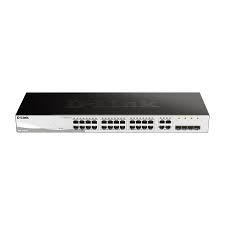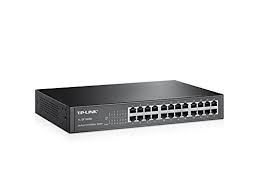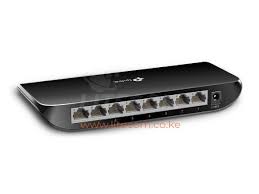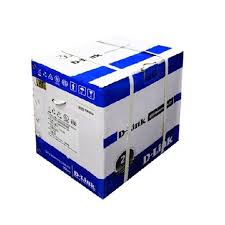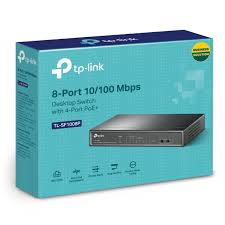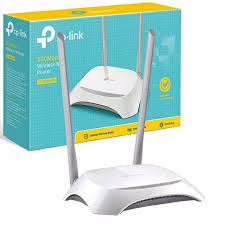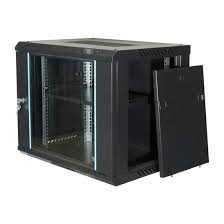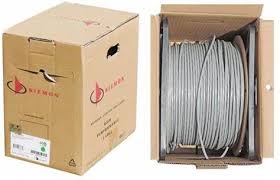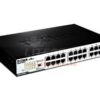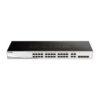D-Link DGS-1210-28P Websmart Switch
The D-Link DGS-1210-28P delivers enterprise-grade switching capabilities through an intuitive web-based management interface, bridging the gap between basic smart switches and complex fully managed solutions. This WebSmart switch combines 24 Gigabit PoE+ ports with advanced Layer 2 features, addressing the connectivity and power requirements of medium-sized business networks.
Network administrators choose the DGS-1210-28P when deploying comprehensive PoE infrastructure that requires intelligent management without the complexity of CLI-based configuration systems. The switch provides centralized power and data delivery for IP phones, wireless access points, security cameras, and other powered devices through a simplified management approach.
Organizations upgrading from basic switching infrastructure find the DGS-1210-28P offers immediate improvements in network visibility, control, and security while maintaining accessibility for administrators without extensive networking backgrounds.
Web-Based Management and Configuration Simplicity
The DGS-1210-28P operates through an intuitive web-based interface that simplifies advanced networking features without requiring command-line expertise. The WebSmart management approach provides access to enterprise-class functionality through graphical configuration tools and wizards.
Advanced management capabilities include:
- Web-Based Interface: Browser-based configuration and monitoring
- VLAN Management: 802.1Q VLAN support with up to 256 VLANs
- Quality of Service: Advanced traffic prioritization and bandwidth control
- Link Aggregation: Static and LACP port trunking capabilities
- SNMP Support: Network monitoring and management integration
- Access Control Lists: Layer 2, 3, and 4 traffic filtering
- Port Mirroring: Traffic analysis and troubleshooting tools
Comprehensive PoE+ Implementation and Power Management
The 193W PoE+ budget of the DGS-1210-28P supports up to 24 PoE+ devices simultaneously, with intelligent power allocation that maximizes connected device potential while preventing overloading. Advanced power management features enable administrators to prioritize critical devices and schedule power delivery based on operational requirements.
PoE+ capability supports demanding devices requiring up to 30W per port, including PTZ security cameras, high-powered wireless access points, and advanced IP phones with color displays. The switch automatically detects device power requirements and allocates appropriate wattage without manual intervention.
Port Configuration and Physical Architecture
Physical connectivity encompasses 24 x 10/100/1000 Mbps PoE+ enabled ports plus 4 x 1 Gbps SFP uplink ports for fiber connectivity or high-speed backbone connections. The 1U rackmount design accommodates standard equipment racks while providing maximum port density for space-constrained environments.
Technical specifications include:
- Switching Capacity: 56 Gbps non-blocking throughput
- Forwarding Rate: 41.67 Mpps wire-speed performance
- MAC Address Table: 16K entries with automatic learning
- Buffer Memory: 4.1 MB packet buffer allocation
- PoE Power Budget: 193W total across 24 PoE+ ports
- Power Consumption: 245W maximum including full PoE load
- Operating Temperature: 0°C to 50°C (32°F to 122°F)
Advanced Layer 2 Features and Network Intelligence
The DGS-1210-28P implements comprehensive Layer 2 switching protocols that enhance network performance, security, and reliability in medium enterprise environments. VLAN support enables network segmentation for security purposes, guest access isolation, and traffic optimization without requiring additional hardware.
Spanning Tree Protocol variants including RSTP and MSTP provide network redundancy and loop prevention in complex topologies. Quality of Service implementation ensures voice and video traffic receives appropriate priority during periods of network congestion.
Security Features and Access Control
Network security implementation includes comprehensive access control mechanisms designed for business environments requiring structured security policies. The DGS-1210-28P supports port-based authentication, MAC address filtering, and advanced storm control to prevent network attacks and unauthorized access.
Security capabilities encompass:
- 802.1X Authentication: User and device-based access control
- Port Security: MAC address limiting and violation handling
- DHCP Snooping: Protection against rogue DHCP servers
- IP Source Guard: Prevention of IP address spoofing attacks
- Dynamic ARP Inspection: ARP packet validation and security
- Access Control Lists: Comprehensive traffic filtering policies
- SSL/HTTPS: Secure management interface encryption
Advanced PoE Management and Power Scheduling
Intelligent PoE management features enable administrators to optimize power delivery based on operational requirements and device priorities. The DGS-1210-28P supports time-based PoE scheduling, allowing automatic power cycling for connected devices during maintenance windows or energy conservation periods.
Power priority settings ensure critical devices maintain power during high-demand scenarios, while PoE monitoring provides real-time visibility into power consumption patterns. These features prove particularly valuable in security camera deployments where power management directly impacts system reliability.
Performance Optimization and Traffic Analysis
Built-in traffic monitoring capabilities provide administrators with detailed insight into network utilization patterns and potential bottlenecks. Port statistics, VLAN traffic analysis, and QoS queue monitoring enable proactive network optimization and capacity planning.
The DGS-1210-28P includes bandwidth control features that prevent individual ports or VLANs from consuming excessive network resources. Rate limiting and traffic shaping capabilities ensure fair bandwidth allocation while maintaining performance for business-critical applications.
Practical Applications in Medium Enterprise Networks
Medium-sized businesses frequently deploy the DGS-1210-28P as a central distribution switch connecting employee workstations, IP telephony systems, and wireless infrastructure. The combination of PoE+ capability and advanced management features eliminates the need for separate PoE injectors while providing comprehensive network control.
Educational institutions utilize the switch in classroom and administrative environments where diverse PoE devices require centralized management. The web-based interface enables IT staff to monitor and configure network policies without requiring extensive training on complex management systems.
Integration with Network Management Systems
SNMP support enables integration with third-party network monitoring platforms, providing centralized visibility across heterogeneous network environments. The DGS-1210-28P supports standard MIBs for compatibility with popular network management systems including SolarWinds, PRTG, and Nagios.
Syslog functionality captures network events and security incidents for centralized logging and analysis. Email alerting capabilities notify administrators of critical events including power failures, port security violations, and system status changes.
Installation and Deployment Considerations
The DGS-1210-28P requires minimal setup procedures while providing comprehensive configuration options for advanced network requirements. Initial configuration involves connecting the switch to the network, accessing the web interface through a standard browser, and following guided setup wizards for basic functionality.
Default security settings provide immediate protection while allowing administrators to customize access policies based on organizational requirements. Configuration backup and restore functions protect settings and simplify device replacement procedures during maintenance or failure scenarios.
Long-Term Value and Scalability
The WebSmart architecture of the DGS-1210-28P provides a scalable foundation for network growth without requiring immediate migration to fully managed switching solutions. The switch accommodates expanding PoE device deployments while maintaining centralized management capabilities.
Feature richness ensures the switch remains valuable as organizational networking requirements evolve. Advanced capabilities including VLAN support, QoS implementation, and security features provide room for network sophistication without requiring hardware replacement in the near term.

